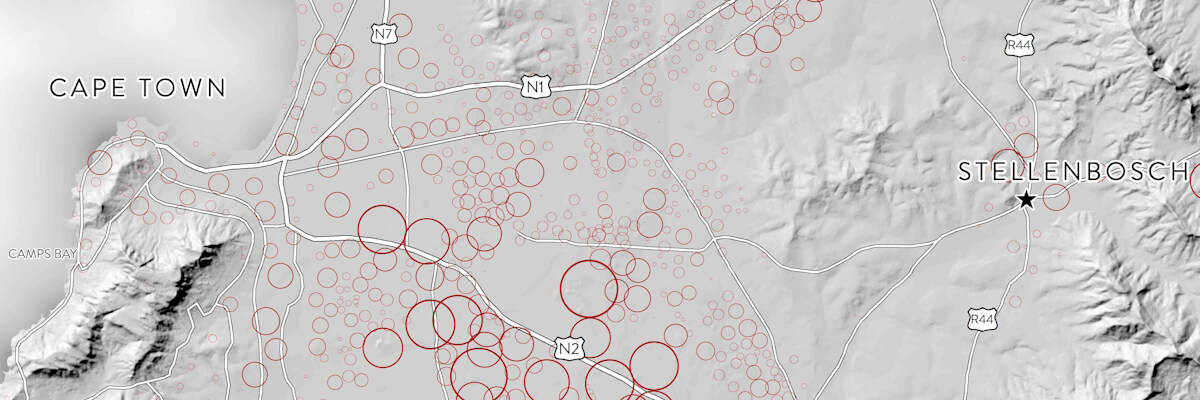

Introduction to GIS (attendance)
Jul 29 - Aug 23
| R6000Download the course prospectus
This introductory course is aimed at GIS beginners who require instruction in the basic theoretical and practical functionality of GIS.
Themes covered in the course include:
- An introductory overview of GIS in the context of geo-information science; the nature of geographical data
- GIS data models
- GIS processes such as the capture, storage, editing, manipulation and analysis of spatial data
- Map projection and coordinate systems
- Map production: map design and cartographical visualisation with a GIS
- Spatial analysis and modelling
Upon completion, participants will understand the basic principles of spatial data, cartography, map projections, data models, and other entry-level GIS concepts and will have applied these in ArcGIS.
Basic skills needed to do this course?
Participants need to have basic computer skills.
Accreditation
This course is accredited by Stellenbosch University an accredited higher education provider.
Theme |
Learning hours* |
Unit Standard Link |
| Context of GI Science | 40 | View Unit |
| The basic principles of spatial data | 15 | View Unit |
| Map projections | 5 | View Unit |
| Spatial and hybrid queries | 10 | |
| Data capture from secondary data sources | 10 | View Unit |
| GPS | 5 | View Unit |
* The number of learning hours associated with each of these unit standards within this course.
Outcomes
Students who complete the full course will be able to:
- Demonstrate a generic understanding of what GIS is.
- Demonstrate an appreciation of the specialist knowledge needed to build a proper GI system.
- Demonstrate an understanding of how GIS can be used in different industries.
- Demonstrate an understanding of the functionality available from a GIS.
- Demonstrate an understanding of models of the real world.
- Demonstrate a basic understanding of the vector data model.
- Demonstrate a basic understanding of the raster data model.
- Understand the concept of attribute extractions from real world entities.
- Explain components of a reference system.
- Identify an appropriate map projection for a specific task.
- Convert from one projection and or reference system to another.
- Include fundamental elements on a new map.
- Include symbology reference on the map.
- Create and execute a simple vector spatial query under supervision.
- Create and execute a simple raster spatial query under supervision.
Prescribed reading
In preparation for the course, participants will be expected to read Chapters 1-9 of Chang (2019). The full reference is:
Chang, K., 2019: Introduction to geographic information systems. 9th ed. McGraw Hill.
A copy of this book can be ordered at an additional cost (please contact the short course manager for availability and costing). A two-hour theory exam on this preparatory reading is scheduled on the fifth day of the course (only for students who have registered for the full course).
Course structure & Cost
Attend-only option @ R 6 000
Students who are not interested in being assessed may choose to register for the first 4 days only (i.e. only attend the lectures and exercises and not write the exam or complete any assignments). Students choosing this option will receive a certificate of attendance.
Standard course fees may be reduced by 20% for Stellenbosch University students and staff members when paid via a university cost point.
Application
Accredited course click here.
Check our calendar for dates on when our other short courses are presented.
